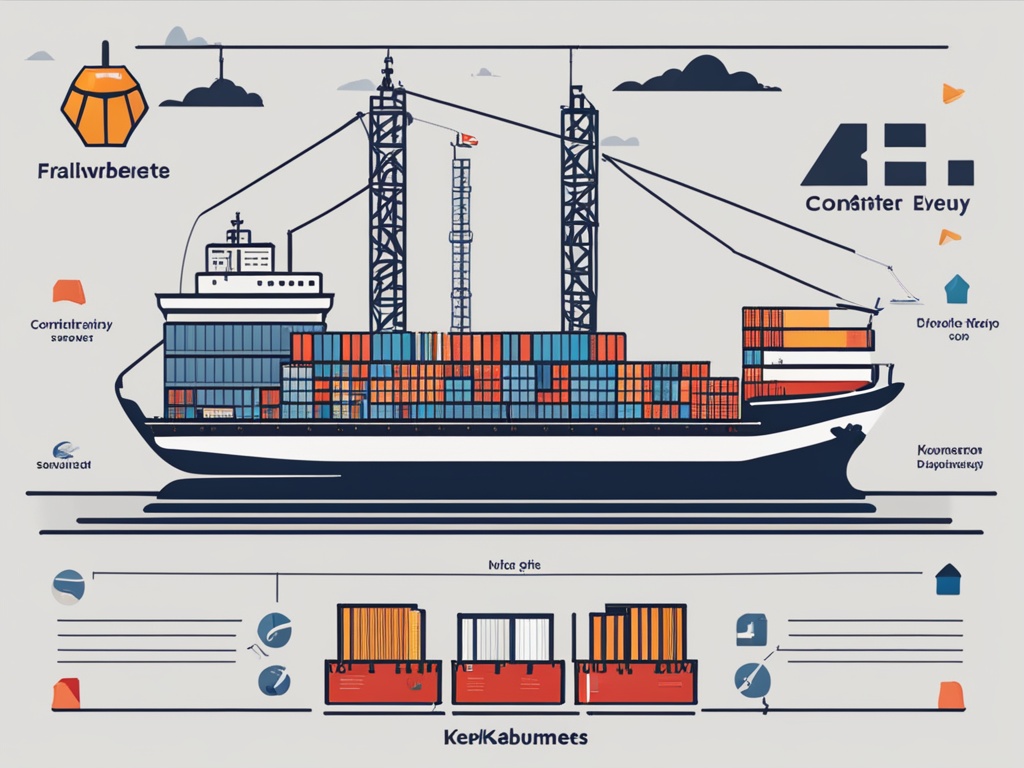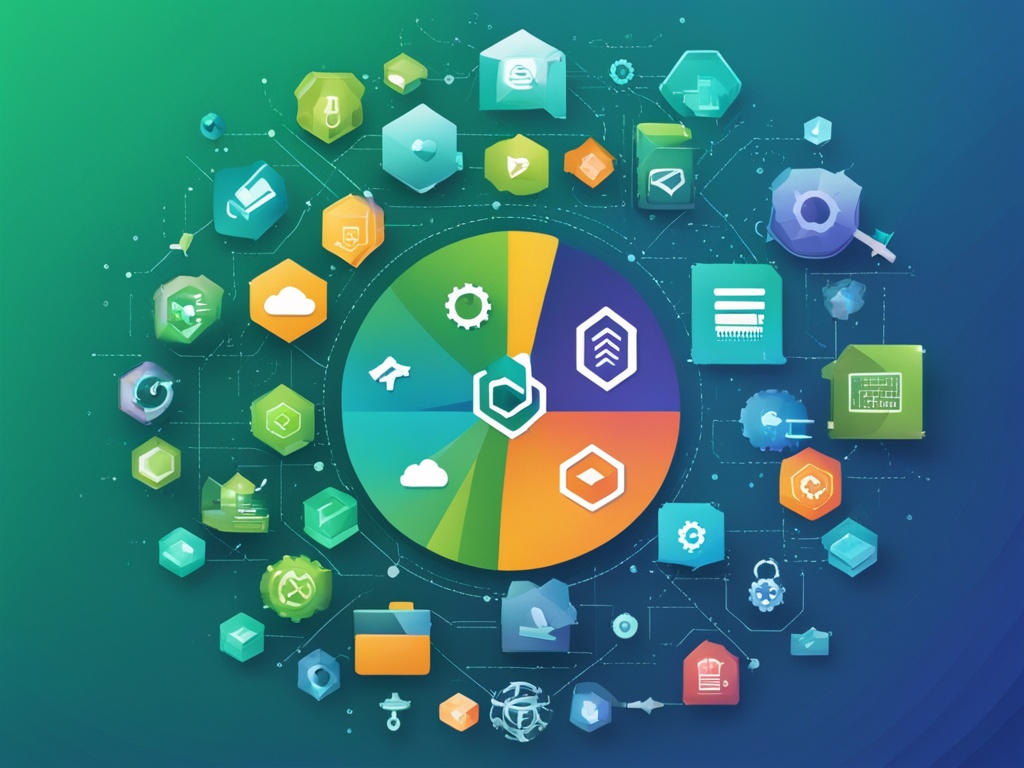DevOps toolset has changed how software gets made and delivered. It’s making things faster, more efficient, and people work together better. But, to really make it work, you need the best tools.
In this piece, we’ll check out the top 25 DevOps toolset of 2024. These tools make it easier for teams to work better, use more automation, and get more results. You ready to find out which tools can take your software journey to the next level? Let’s dive in.
Key Takeaways:
- Discover the top 25 DevOps tools that are shaping the industry in 2024.
- Learn how these tools cover various aspects of the DevOps process, including collaboration, automation, continuous integration and deployment, infrastructure management, containerization, monitoring and logging, security, agile development, and more.
- Understand how leveraging the right DevOps tools can streamline processes, improve efficiency, and drive better results.
Understanding DevOps: A Paradigm Shift in Software Delivery
DevOps is about more than just tools; it changes how software is sent out. It uses knowledge from both development and operations to make delivering software smooth. It does this from the start of a plan to the release of the final product.
The Cultural Impact of DevOps on Team Collaboration
DevOps aims to get rid of the walls between developers and those in operations. It inspires working together and taking on tasks as a team. This way, work is done faster and better.
Teams communicate openly and share knowledge more. They support each other, making software delivery quicker and more trusted. Every team member works together on all parts of software development. This makes sure everyone shares the goal of top-notch software.
Developers, operations experts, quality checkers, and others join their skills in DevOps. This mix helps teams innovate and improve all the time. By working as one and removing boundaries, they meet customer needs swiftly and add value faster.
Automation: The Engine Behind Efficient DevOps Practices
Automation is key in DevOps; it lets teams skip over repeated work and focus on bigger goals. By letting tools handle tasks like putting code together or testing it, software comes out quicker and better.
Doing things automatically lowers mistakes, makes work smoother, and easier to do again. DevOps uses tools to manage tasks, keep things in check, and use the same methods in all software steps.
With automated work, releasing software updates becomes a regular thing that teams do with confidence. This way, they quickly see how users react and make changes faster. This means they offer value more often.
Choosing automation in DevOps gives teams more time and resources. This lets them be more creative, solve problems, and make the way software is sent out even better.
| Key Elements of DevOps | Benefits of DevOps |
|---|---|
| Collaboration and communication between development and operations teams |
|
| Continuous integration and continuous delivery (CI/CD) |
|
| Automation of manual and repetitive tasks |
|
DevOps Toolset Trends: What’s New in 2024
The DevOps world keeps changing, bringing in fresh tools and tech to satisfy the evolving needs of software work. This year, 2024, will see some big trends in the DevOps toolbox.
Cloud-native tech is getting more popular as groups realize the perks of cloud services. Tools like Kubernetes and Docker stay on top for handling containers and sending out applications.
Security is becoming even more critical. More and more tools are coming out to boost how safe DevOps habits are. Products like Chef Automate and Snyk are there to keep apps, systems, and code secure.
AI and machine learning are stepping up in the DevOps scene. They make it easier to choose better and do away with dull jobs through automation. Expect to see them used for finding strange things, making guesses, and doing tests automatically.
Keeping current with trends is vital for anyone in DevOps. With these new tools, businesses can up their DevOps game, boost teamwork, and see better outcomes.
Continuous Integration and Continuous Deployment: The Heartbeat of DevOps
Continuous integration and continuous deployment, or CI/CD, are key in DevOps. They help teams send out software quicker with fewer errors. This is because they automatically combine changes and send them to live systems.
By using CI/CD, teams spot and fix bugs early. This leads to quicker fixes and better software updates.
Jenkins: Spearheading CI/CD Automation
Jenkins is a free, very adaptable tool at the center of CI/CD processes. It has many add-ons for doing different parts of sending software out.
It links smoothly with where code is stored, how the code is made, checked, and then sent to users. Jenkins adapts well to any company’s needs, big or small. This lets them create just the right system for their software delivery.
CircleCI and Travis CI: Pushing the Boundaries of CI/CD
CircleCI and Travis CI work online to help teams get products out quickly. They have the tools teams need to check, build, and put their software live, efficiently.
These tools understand many languages and work well with where code lives. So, it is simple to start the process when there are code changes or check work together before it’s added.
Plus, CircleCI and Travis CI show how things are going and if everything is okay. They are easy to use and come with lots of help to set everything up. They make managing work to release software a lot simpler.
Together with tools like Jenkins, CircleCI, and Travis CI, CI/CD brings speed, teamwork, and trust in software. Teams can update their work often, quickly making new things for users. This brings faster improvements and a better experience for people using the software.
Infrastructure as Code: From Manual Configuration to Automation
Infrastructure as Code (IaC) is a key part of DevOps. It lets teams handle and set up infrastructure using code. This move to automation from manual setups boosts DevOps in many ways. It helps teams work more efficiently, grow easily, and ensure everything is done the same way every time.
The Terraform tool is changing how we manage infrastructure. It lets us set up infrastructure by writing code that’s easy to read. This approach means we can create resources in the same way everywhere. It cuts down on mistakes and lets us repeat the process reliably. Terraform works with many cloud services and technologies, making it quite handy for managing infrastructure through code.
Ansible, on the other hand, stands out for its hands-off method. It doesn’t need an agent installed on each device, which makes it light and less complex. Ansible makes it simple to define and enforce system setups through code. This makes it great for setting up infrastructures that are always the same, no matter how many systems there are.
Puppet and Chef have been leading the way in automatic system setup. They focus on keeping systems the way you want them and pushing out the same settings everywhere. These tools let teams turn their setup procedures into code. Then, they automate these processes on a big scale, making life easier for everyone involved.
By shifting to infrastructure as code with tools like Terraform, Ansible, Puppet, and Chef, businesses can leave behind the days of manual setups full of errors. They gain reliable methods that are also faster and more consistent. This leads to better team work, growth potential, and a more stable DevOps realm.
Containerization: A Catalyst for DevOps Efficiency

Containerization has changed how software gets to you in the DevOps world. It puts applications and their needs into containers. This way, teams can make sure things work well and fast in any setting. We’ll look at how using containers speeds up work in DevOps.
Docker: Enabling Consistent Application Delivery
Docker stands out in this containerization wave. It lets developers easily create, ship, and run their apps in containers. This way, it’s the same no matter the platform. Deploying applications becomes smoother and less likely to run into problems.
Using Docker, you pack all an app needs into a container, isolating it from the rest. So, the app will run well even if the system it’s on changes.
Docker also lets you do things like keep track of different app versions. This means you can switch back easily if something goes wrong. It’s all about making app delivery faster and more efficient for DevOps teams.
Kubernetes: Mastering Container Orchestration
Now, Kubernetes picks up where Docker leaves off for bigger tasks. It helps control and grow your apps in containers. This makes it a must-have for DevOps work.
Kubernetes has lots of tools for making sure your apps are running smoothly. It can balance the load, manage storage, and fix issues on its own. This keeps apps up and running without much day-to-day work needed.
It lets DevOps groups handle many parts of an app at once and make adjustments as they’re needed. This means they can take care of what really matters, improving the things users see and use.
Together, Docker and Kubernetes improve how DevOps teams send out apps. They make things more organized and quick. Businesses can use these to work better in DevOps and put out software faster.
Agile & DevOps: Complementary Approaches to Software Development
Agile and DevOps work together for better software development. They stress on working together, being flexible, and delivering quickly. This leads to more effective development processes. Teams that blend Agile with DevOps tend to reach their project goals more successfully.
Agile methods, like Scrum and Kanban, set up a pattern for building in small steps. They make sure customers are happy by getting feedback often and making changes as they go. These teams work in short, intense periods called sprints. Each sprint brings a new part of the software that’s ready to use. This way, they can adjust to new needs quickly.
DevOps, on the other hand, is all about teaming up and using tools to speed up getting software out. It gets rid of the barriers between developing and running the software, making the whole process smoother and faster. By using DevOps tools, like those for constant testing and putting out new versions, changes can be made and shared without a hitch.
Bringing Agile and DevOps together leads to even greater results. Agile focuses on making things better bit by bit, which suits DevOps’ aim for ongoing feedback and growth. This merger also improves how everyone works together, which speeds up getting feedback, betters how people talk, and lifts everyone’s efficiency levels.
DevOps’ automatic actions let Agile teams concentrate on making top-notch software. By handling things like getting software ready to use, testing, and starting new versions automatically, DevOps saves time and cuts down on mistakes. This means developers can work on making new things, and those who keep the software running can make sure it gets better and runs smoothly.
Together, Agile and DevOps encourage always getting better, helping teams learn, adjust, and deliver faster. By constantly improving how they work, teams do more, get better, and make clients happier quicker.
Overall, Agile and DevOps form a strong foundation for creating software. They highlight working together, being adaptable, and acting fast. Their methods and principles help teams run projects more effectively and keep up with the always-changing world of software.
Monitoring and Logging: The Lens to System Performance
Monitoring and logging are key in DevOps, providing insights into system and app health. They help identify and fix issues before they cause a problem. This keeps software running smoothly.
Exemplary Tools like Splunk and Nagios in Action
Splunk and Nagios are top tools for monitoring in DevOps.
Splunk lets teams gather and analyze data from various sources, like logs and events. It helps spot problems quickly, thanks to its real time search and clear visuals. Splunk also has many add-ons and uses machine learning for even better analysis.
Nagios is a long-standing choice for monitoring. It supports a wide range of components and offers detailed alerts and reports. Nagios’ flexibility and large plugin library are great for checking many devices and apps.
Breaking Down Complex Data with Prometheus and Grafana
Prometheus and Grafana help make sense of complex system data.
Prometheus is for collecting and managing data over time. It uses a strong query language to watch metrics like application speed or CPU use. Its alerts are customizable, making it good for fast-moving systems.
Grafana works well with Prometheus for clear, interactive visuals. It turns data into easy-to-read graphs and charts. Grafana’s features, like interactive data exploration, help users understand trends quickly.
Using tools like Splunk, Nagios, Prometheus, and Grafana brings deep insights into system performance. They help teams fix issues early and improve the DevOps process with smart, data-driven choices.
Security & DevOps: Mitigating Risks with Automated Tools
Security is key in the DevOps world. It makes sure that apps, systems, and code stay safe from threats. By adding security early in the software making process, risks are lowered. DevSecOps merges security with DevOps to make things flow smoothly.
Building a Secure DevOps Culture with DevSecOps
DevSecOps is all about being ahead on security. It gets teams thinking about security needs right from the start. This makes apps and systems safer. Integrating security into all development steps boosts safety. It minimizes risks and improves security overall. Head on to this page if you would like to understand more about DevSecOps tools.
Ensuring Security with Tools like Chef Automate and Snyk
For added security, tools like Chef Automate and Snyk can help. Chef Automate is great for keeping things secure as apps and systems are made. It does this by managing setups, checking rules, and monitoring for issues.
Snyk focuses on securing the building blocks of software. It looks for and helps fix flaws in the code. With Snyk, finding and solving code problems happens before bad things can happen.
Security Tools for DevOps
| Tool | Description |
|---|---|
| Chef Automate | Provides continuous automation for infrastructure and applications, ensuring security and compliance throughout the development lifecycle. |
| Snyk | Focuses on securing open-source code and dependencies, helping teams identify and fix potential vulnerabilities in their software. |
Streamlining DevOps Processes with Agile Development Plugins
Agile development plugins are key in making DevOps better. They bring many features like improving teamwork and making things more automatic. With these tools, teams include Agile ways in their work, leading to great software results.
One big help of these plugins is in handling backlogs well. They allow teams to sort tasks, watch how things are going, and make sure they finish the work on time.
They are also really good at planning sprints. Teams can outline what they aim to do, divide tasks, and watch how each part is moving. This makes sure teams deliver value to users often.
Plugins also help keep an eye on tasks and see how everything is going. They provide charts and tools that let teams see if there are any problems and figure out how to be better and faster.
Some favorite plugins out there are:
- Jira Software: Offers many tools for managing projects and keeping everything agile.
- Trello: Helps teams be flexible and organized, making it easy to follow tasks and stay in touch.
- Asana: A tool for managing work that also boosts teamwork and planning.
These tools let teams take on Agile practices in their DevOps, improving how they work together and making things go smoother. Using these plugins makes DevOps better and leads to stronger software work.
Want to know more about new trends and tools in DevOps? Let’s keep reading.
Leveraging AI and ML in DevOps Tools for Enhanced Decision Making

In today’s world, software development is always changing. AI and ML are changing how DevOps teams work. They add smart features to tools, helping teams make better decisions, cut out boring jobs, and work more efficiently.
These advanced tools give teams deep insights and the power to predict. They look at tons of data, find patterns, spot what’s not right, and warn about future problems. This means teams can fix things before they slow down their work.
For example, special tools that use AI and ML can find odd behavior in systems. This could mean a security problem or something slowing down. They watch and learn from data over time. Then, they catch any changes as they happen.
“AI and ML technologies make it easier for DevOps teams to quickly understand complex data. This lets them make choices based on solid information and act before problems grow.”
Predictive analytics, thanks to AI and ML, help teams guess what might come next in their systems. Using data from the past, these tools can point out trends, plan for how much they’ll need to use resources, and find ways to run things better.
AI and ML also play a big part in testing new software. They can look at test results, learn from them, and then test smarter next time. This early find-fix process makes sure software is top quality when it comes out.
Bringing AI and ML into DevOps makes a big difference. It helps in making smarter choices, getting rid of boring jobs, and making things run better. The right AI and ML tools can really boost how fast teams deliver top-notch software.
DevOps as a Service: Integrating Tools for Seamless Deployment
DevOps as a Service is getting popular in the software industry. It brings together tools and services for easy deployment and management of apps. This concept allows businesses to use many resources and skills to make their DevOps work better and to make delivering software smoother.
Under the DaaS umbrella, there are different as-a-service models. These include things like PaaS, IaaS, and SaaS. They give companies the ability to flex and grow their tech needs to support DevOps.
PaaS helps with fast app creation and management. Developers don’t have to worry about the base technology. It includes everything needed for app development, like tools and frameworks, making life easier.
IaaS focuses on giving out virtualized basics like servers and storage. It lets companies change their tech setup as needed, making sure their apps are always available and reliable.
SaaS means ready-made apps accessed online. This cuts the need to install and maintain software. It lowers the work and cost for companies.
Integrating different tools well is key in DaaS. Mixing tools smartly helps extract full value from each. This blends all the necessary steps smoothly over the software’s life.
Smoothing out data flow across project steps helps with working better together faster. It cuts manual tasks, making everything clearer and smoother so that progress is ongoing and easy to see.
DaaS brings several pluses when combined with the right tools:
- It makes launching apps faster, giving a leg up in the market.
- Teamwork gets a boost, thanks to better sharing and talking.
- It’s easier to grow the tech side to meet any demand.
- Less manual work and clearer steps make the team focus better.
- Savings happen when businesses use DaaS’s resources wisely.
DevOps as a Service revolutionizes how software is developed and delivered. It ties together tools and services for smooth app handling. Knowing and using these models and tools right, businesses can make their DevOps shine. They can meet the challenges of today’s fast-changing tech world with ease.
Conclusion
DevOps tools are crucial for making software development and delivery smoother. They help organizations launch products faster, work together better, and increase overall efficiency. In this article, we explored the top 25 DevOps tools for 2024. These tools cover areas such as teamwork, automation, and managing software projects.
By using these tools and keeping up with new trends, companies can get the most out of DevOps. This leads to better results in the fast-changing world of software. These tools offer solutions for working on projects together, automating tasks, and keeping everything safe.
Technology keeps moving forward, so staying ahead is key for businesses. When companies choose and use DevOps tools well, they become more flexible, reliable, and innovative. The future of DevOps is about tools that keep up with industry needs.
To sum up, picking the right DevOps tools and being aware of new developments can benefit organizations. It helps them produce top-notch software in a smooth and efficient way. Stay curious, check out new tools, and choose wisely to excel in software development.
FAQ
What are the top 25 DevOps tools in 2024?
The top 25 DevOps tools in 2024 are key for the DevOps process. They help with teamwork, automation, and managing projects. You’ll find tools like Jenkins, CircleCI, and Docker on the list.
What is DevOps and why is it important?
DevOps changes how software is delivered by joining development and operations teams. This leads to better teamwork and faster software releases. Automation and using code for infrastructure are big parts of DevOps.
What are the latest trends in the DevOps toolset for 2024?
In 2024, DevOps tools are focused on using the cloud, making things more secure, and integrating AI. There’s also a new trend called DevOps as a Service, aiming to make DevOps easier and faster.
What are some examples of tools for continuous integration and deployment (CI/CD)?
Jenkins is a top choice for automation in CI/CD. CircleCI is known for its smart features. Travis CI makes it easy to deliver software to various platforms.
What is Infrastructure as Code (IaC) and what tools can be used for it?
IaC uses code to manage and set up infrastructure. Terraform and Ansible are leading tools for this. They make setting up and managing resources easy. Puppet and Chef are also good for keeping configurations in check.
How does containerization contribute to DevOps efficiency?
Containerization packs apps and their needs into containers. This makes everything more consistent and easy to move around. Docker and Kubernetes are two big tools for this job.
How do Agile and DevOps work together in software development?
Agile and DevOps both aim to make software better and faster. Agile focuses on how teams work, like with Scrum. DevOps adds tools and automation to keep everything running smoothly.
What are some notable tools for monitoring and logging in DevOps?
In DevOps, tools like Splunk and Nagios watch for problems and help fix them before they get serious. Prometheus and Grafana are great for understanding and seeing how your system is doing.
How can security be integrated into the DevOps process?
Security in DevOps, called DevSecOps, means everyone works on security all the time. Tools like Chef Automate and Snyk make sure everything stays secure.
Are there any plugins that enhance Agile and DevOps processes?
Yes, there are plugins that make Agile and DevOps smoother. They help with planning, tracking tasks, and managing the workload. This makes Agile work well with DevOps.
How are AI and ML utilized in DevOps tools?
DevOps tools are starting to use AI and ML to make better decisions and do tasks on their own. With these technologies, DevOps can spot problems early, predict changes, and test software automatically.
What is DevOps as a Service (DaaS) and how does it benefit the DevOps landscape?
DevOps as a Service blends tools and services to make managing software easier. It uses different models, like PaaS. This approach makes a more united and effective way to do DevOps.

